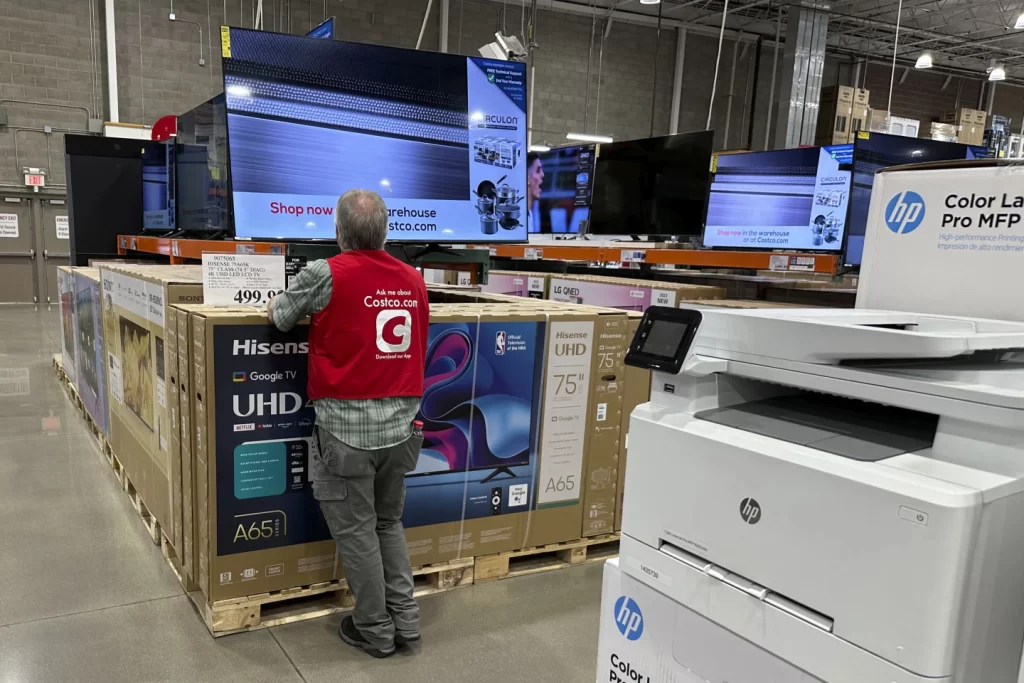
WASHINGTON — Consumer inflation in the United States cooled last month yet remained elevated in the latest sign that the pandemic-fueled price surge is only gradually and fitfully coming under control.
Tuesday’s report from the Labor Department showed that the consumer price index rose 0.3% from December to January, up from a 0.2% increase the previous month. Compared with a year ago, prices are up 3.1%.
That is less than the 3.4% figure in December and far below the 9.1% inflation peak in mid-2022. But the latest reading is still well above the Federal Reserve’s 2% target level at a time when public frustration with inflation has become a pivotal issue in President Joe Biden’s bid for re-election.
Excluding volatile food and energy costs, so-called core prices climbed 0.4% last month, up from 0.3% in December. On a year-over-year basis, core prices were up 3.9% in January, the same as in December. Core inflation is watched especially closely because it typically provides a better read of where inflation is likely headed.
Biden administration officials frequently note that inflation has plummeted since pandemic-related supply disruptions and significant government aid sent it soaring three years ago. And a raft of forward-looking data suggests that inflation will continue to cool.
Still, even as it nears the Fed’s target level, many Americans remain exasperated that average prices are still about 19% higher than they were when Biden took office.
From December to January, average national gas prices tumbled 3.3%, the government said. Yet so far this month, the average price has climbed higher, rising 15 cents to $3.23 a gallon as of Tuesday, according to AAA.
Grocery prices rose 0.4% from December to January, the biggest such rise in a year, though compared with 12 months earlier, food prices are up just 1.2%.
The costs of physical goods, including clothing, used cars and prescription drugs, fell for a third straight month. Lower prices for goods are the key driver that is cooling inflation.
By contrast, the prices of services — hotel rooms, restaurant meals, auto insurance, apartment rents and the like — are still rising faster than they did before the pandemic and keeping overall inflation persistently high. The cost of car insurance has soared more than 20%, on average, compared with a year ago.
The mixed data released Tuesday could reinforce the caution of Fed officials, who have said they’re pleased with the progress in sharply reducing inflation but want to see further evidence before feeling confident that it’s sustainably headed back to their 2% target. Most economists think the central bank will want to wait until May or June to begin cutting its benchmark rate from its 22-year-high of roughly 5.4.
The Fed raised its key rate 11 times, from March 2022 to July of last year, in a concerted drive to defeat high inflation. The result has been much higher borrowing rates for businesses and consumers, including for mortgages and auto loans. Rate cuts, whenever they happen, would eventually lead to lower borrowing costs for many categories of loans.
Fed Chair Jerome Powell noted during a recent news conference that most of the decline in inflation so far has stemmed from lower prices for goods, including used cars, furniture and appliances, which have dropped in six of the past seven months.
By contrast, the costs of services — auto repairs, health care, hotel rooms, concerts and other entertainment — are still rising briskly. Core services prices, which exclude energy, jumped 5.3% in 2023. The Fed will want to see some cooling in services prices to become more assured that inflation is declining.
A rate cut by the central bank typically lowers the costs of mortgages, auto loans, credit cards and other consumer and business borrowing, and could bolster the economy. But a much stronger economy could also pose a challenge for the Fed because faster growth can accelerate wages and consumer spending. If businesses aren’t able to keep up with greater customer demand, they typically respond by raising prices, which would worsen inflation.
In the final three months of last year, the economy grew at an unexpectedly rapid 3.3% annual rate. There are signs that growth remains healthy so far in 2024. Businesses engaged in a burst of hiring last month. Surveys of manufacturing companies found that new orders rose in January. And services companies reported an uptick in sales.





